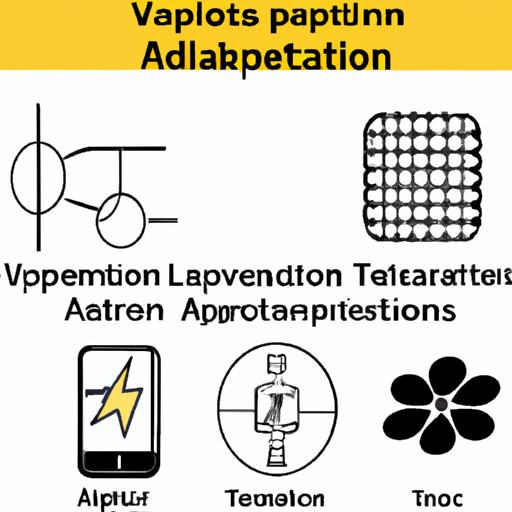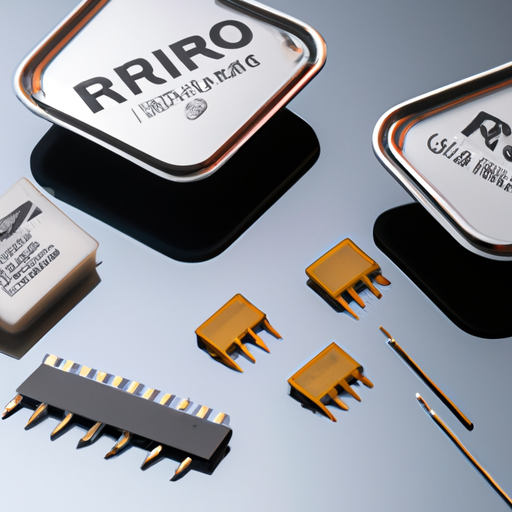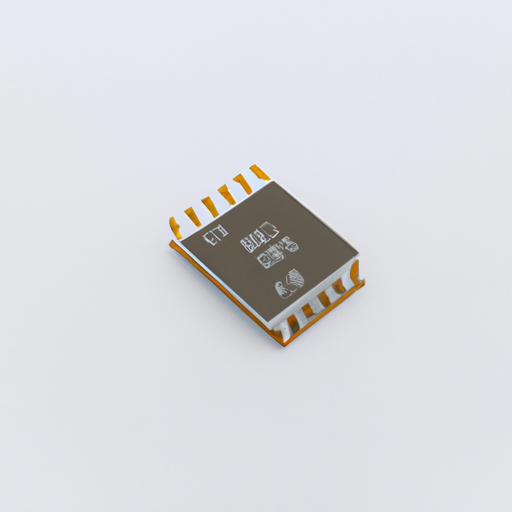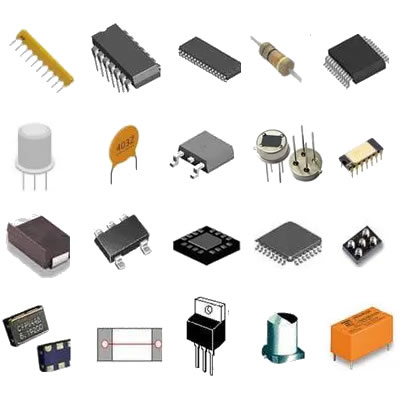What is a tantalum capacitor?
What is a Tantalum Capacitor?
I. Introduction
A tantalum capacitor is a type of electrolytic capacitor that utilizes tantalum metal as its anode. Known for their high capacitance-to-volume ratio, tantalum capacitors are essential components in various electronic circuits, providing stability and reliability in performance. This article will explore the history, construction, working principles, advantages, disadvantages, applications, and future trends of tantalum capacitors, offering a comprehensive understanding of their significance in modern electronics.
II. History of Tantalum Capacitors
The story of tantalum capacitors begins with the discovery of tantalum itself in 1802 by Swedish chemist Anders Ekeberg. Tantalum was initially recognized for its resistance to corrosion and high melting point, making it an intriguing material for various applications. The development of tantalum capacitors began in the mid-20th century, with the first commercial tantalum capacitors introduced in the 1950s.
Over the decades, the applications of tantalum capacitors have evolved significantly. Initially used in military and aerospace applications due to their reliability, they have since found their way into consumer electronics, telecommunications, and medical devices, becoming a staple in modern electronic design.
III. Construction and Composition
A. Materials Used in Tantalum Capacitors
Tantalum capacitors are primarily composed of tantalum metal, which serves as the anode. The dielectric material, typically tantalum pentoxide (Ta2O5), is formed on the surface of the tantalum anode during the manufacturing process. This dielectric layer is crucial for the capacitor's ability to store electrical energy.
B. Types of Tantalum Capacitors
There are two main types of tantalum capacitors:
1. **Solid Tantalum Capacitors**: These capacitors use a solid dielectric and are known for their stability and reliability. They are commonly used in applications requiring high capacitance and low leakage current.
2. **Tantalum Electrolytic Capacitors**: These capacitors utilize a liquid electrolyte, allowing for higher capacitance values. They are often used in applications where size and weight are critical factors.
C. Manufacturing Process
The manufacturing process of tantalum capacitors involves several key steps:
1. **Sintering**: Tantalum powder is compacted and heated to form a solid anode. This process enhances the density and electrical properties of the tantalum.
2. **Anodization**: The sintered tantalum anode is subjected to an electrochemical process that forms the tantalum pentoxide dielectric layer. This layer is essential for the capacitor's function, as it separates the anode from the cathode.
IV. Working Principle
A. Basic Principles of Capacitance
Capacitance is the ability of a component to store electrical energy in an electric field. In a capacitor, this is achieved by placing two conductive plates (the anode and cathode) close to each other, separated by a dielectric material.
B. How Tantalum Capacitors Store and Release Energy
When a voltage is applied across a tantalum capacitor, electrons accumulate on the anode, creating an electric field. This field allows the capacitor to store energy. When the voltage is removed, the capacitor can release this stored energy back into the circuit, providing a stable power supply.
C. Role of the Dielectric Layer
The dielectric layer in tantalum capacitors plays a critical role in their performance. It not only separates the anode and cathode but also determines the capacitor's voltage rating and capacitance value. The quality and thickness of the dielectric layer directly influence the capacitor's efficiency and reliability.
V. Advantages of Tantalum Capacitors
Tantalum capacitors offer several advantages that make them a popular choice in electronic design:
A. High Capacitance-to-Volume Ratio
One of the most significant benefits of tantalum capacitors is their high capacitance-to-volume ratio. This means that they can provide substantial capacitance in a relatively small package, making them ideal for compact electronic devices.
B. Stable Electrical Characteristics
Tantalum capacitors exhibit stable electrical characteristics over a wide range of temperatures and frequencies. This stability is crucial for applications requiring consistent performance, such as in precision instruments and communication devices.
C. Reliability and Longevity
Tantalum capacitors are known for their reliability and long lifespan. They are less prone to failure compared to other capacitor types, making them suitable for critical applications in aerospace, medical, and automotive industries.
D. Performance in High-Frequency Applications
Due to their low equivalent series resistance (ESR), tantalum capacitors perform well in high-frequency applications. This characteristic allows them to handle rapid changes in voltage and current, making them ideal for modern electronic circuits.
VI. Disadvantages of Tantalum Capacitors
Despite their advantages, tantalum capacitors also have some drawbacks:
A. Cost Considerations
Tantalum capacitors tend to be more expensive than other types of capacitors, such as aluminum electrolytic or ceramic capacitors. This cost can be a limiting factor in applications where budget constraints are a concern.
B. Sensitivity to Voltage and Temperature
Tantalum capacitors are sensitive to over-voltage and temperature variations. Exceeding the specified voltage rating can lead to catastrophic failure, including thermal runaway, which can damage the capacitor and surrounding components.
C. Risk of Failure Modes
While tantalum capacitors are generally reliable, they can fail in specific conditions. The risk of failure modes, such as short circuits or thermal runaway, necessitates careful design considerations and protective measures in electronic circuits.
VII. Applications of Tantalum Capacitors
Tantalum capacitors are widely used across various industries due to their unique properties:
A. Consumer Electronics
In consumer electronics, tantalum capacitors are commonly found in smartphones, tablets, and laptops, where space is limited, and reliability is crucial.
B. Telecommunications
Tantalum capacitors play a vital role in telecommunications equipment, providing stable power supply and filtering capabilities in devices such as routers and base stations.
C. Automotive Industry
In the automotive sector, tantalum capacitors are used in electronic control units (ECUs), infotainment systems, and safety features, where reliability and performance are paramount.
D. Medical Devices
Tantalum capacitors are essential in medical devices, including pacemakers and diagnostic equipment, where precision and reliability can be a matter of life and death.
E. Aerospace and Military Applications
Due to their reliability and performance in extreme conditions, tantalum capacitors are widely used in aerospace and military applications, including satellites and defense systems.
VIII. Comparison with Other Capacitor Types
A. Tantalum vs. Ceramic Capacitors
While both tantalum and ceramic capacitors are used in similar applications, tantalum capacitors offer higher capacitance values in smaller sizes. However, ceramic capacitors are generally less expensive and have better performance at high frequencies.
B. Tantalum vs. Aluminum Electrolytic Capacitors
Tantalum capacitors have a higher capacitance-to-volume ratio and better stability compared to aluminum electrolytic capacitors. However, aluminum capacitors are more cost-effective and can handle higher voltage ratings.
C. Tantalum vs. Film Capacitors
Film capacitors are known for their excellent stability and low losses, making them suitable for high-frequency applications. However, tantalum capacitors provide higher capacitance in smaller packages, making them preferable in compact designs.
IX. Future Trends and Innovations
A. Advances in Materials and Technology
Research is ongoing to develop new materials and manufacturing techniques that can enhance the performance and reduce the cost of tantalum capacitors. Innovations in nanotechnology and advanced ceramics may lead to improved capacitance and reliability.
B. Emerging Applications
As technology continues to evolve, tantalum capacitors are finding new applications in areas such as renewable energy systems, electric vehicles, and advanced medical devices, where their unique properties can be leveraged.
C. Environmental Considerations and Recycling
With increasing awareness of environmental issues, the recycling of tantalum capacitors is becoming more important. Efforts are being made to develop sustainable practices for tantalum sourcing and recycling, ensuring a more eco-friendly approach to capacitor production.
X. Conclusion
Tantalum capacitors are vital components in modern electronics, offering high capacitance, stability, and reliability. Their unique properties make them suitable for a wide range of applications, from consumer electronics to aerospace. While they come with certain disadvantages, their advantages often outweigh the drawbacks, making them a preferred choice in many designs. As technology advances, tantalum capacitors will continue to play a significant role in shaping the future of electronic devices. For those interested in electronics, understanding tantalum capacitors is essential for exploring the complexities of modern circuit design.
XI. References
- [1] "Tantalum Capacitors: A Comprehensive Guide," Journal of Electronic Materials.
- [2] "The History and Development of Tantalum Capacitors," IEEE Transactions on Components, Packaging and Manufacturing Technology.
- [3] "Capacitance and Dielectric Materials," Electronics Tutorials.
- [4] "Future Trends in Capacitor Technology," Journal of Applied Physics.







